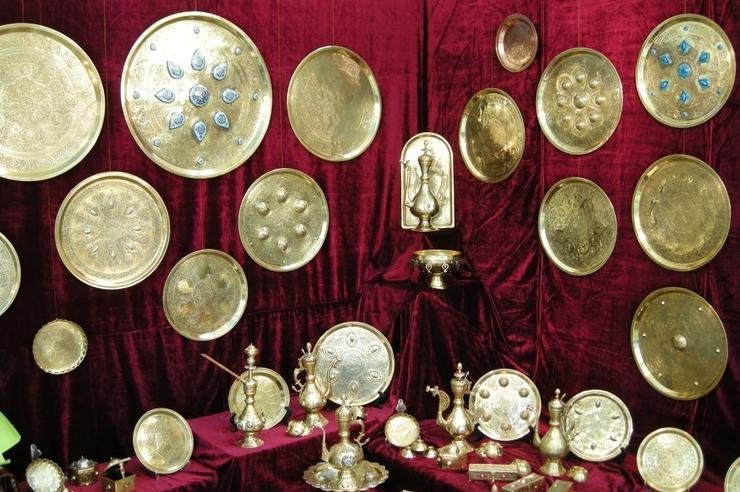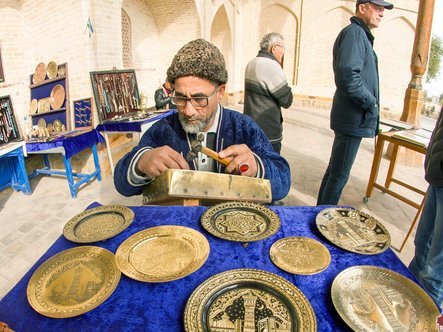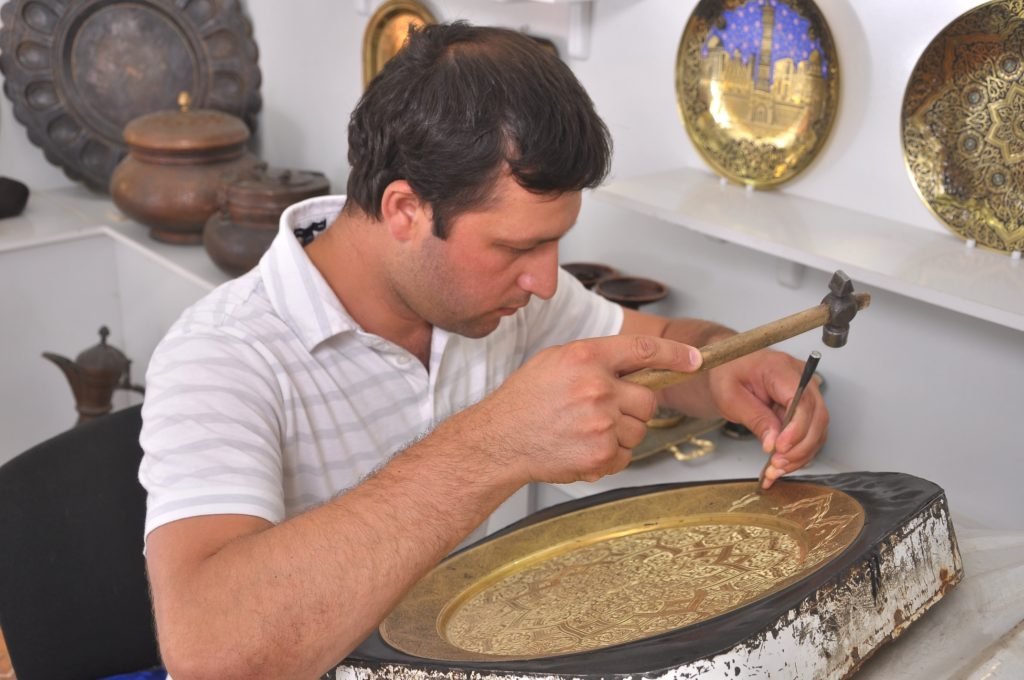Materials for coinage and types of coinage
Types of coinage and materials for coinage
From time immemorial, as soon as people learned to melt metal, chasing metal is used. This method of decorating metal consists in applying an ornament to the surface of the metal by knocking it out. The product acquires a relief, creating a unique ornament.
Coinage since ancient times, decorated a variety of household items, dishes, weapons, military uniforms, shields, helmets and much more. Also coins, luxurious jewelry were minted.
Products decorated with embossing are ornamental or with a more complex two- and three-dimensional volumetric image, representing highly artistic specimens. Different styles of art are used in the interior decoration. However, most of all, this decoration is used in the east, creating an ethnic design. To this day, masters are fond of this kind of arts and crafts at home and in specialized workshops. Now people who have excellent taste aspire to buy metal coinage, and those who are eager for exclusives prefer products made to order. Therefore, the fishery is flourishing and the work of masters is in great demand.
For now there are many directions in coinage art. However, the most difficult kind can be called minting on metal. Here you can create a deeper relief, an original drawing, and the work is incredibly complex and painstaking, requires not only a creative approach, but also the highest level of professionalism. Ornamental or multidimensional relief is created in the process of working with metal, which is much more complicated than for casting.
Types of coinage
Coinage on metal is divided into 2 types: volumetric and flat. In this case, each of them is divided into different subspecies, depending on the technology and texture. Openwork coinage is in particular interest, reminiscent of a delicate soft lace of ornaments. The technological process is the cutting of the background and the subsequent cutting of the ornament along the workpiece. In the work, special tools are used – coins (cuts). Then the product is subjected to firing using a special technology, under a certain temperature regime.

Plane coinage, which is one of the subspecies of flat coinage, is produced on a metal sheet. In this case, the relief is not squeezed out. This type of coinage is called contouring. It is somewhat similar to engraving, but differs in more contour relief, concave or otherwise convex. This method of decorating metal products is used for various elements used in interior decoration or as an independent artistic product.
More difficult is volumetric chasing for metal. This method requires accurate and careful approach, a high level of professionalism.
Not every metal is suitable for work. A material suitable for work must possess many qualities so that the master can create a truly luxurious product, realizing his creative fantasies. Special tools are also needed.
Tools for coinage
An irreplaceable assistant when a chaser is working with metal surfaces is a mint or a cut. These are forged multi-faceted or round rods, with pointed edges, the length of which is usually 15 centimeters.
Types of coins
Kanfarnik – is a mint, with a sharp edge in the form of a blunt needle.
Bypass coins, often called consumables, are straight, or rounded.
Cuttings – coins with sharp edges, similar to a chisel, can be flat or semicircular.
Shredders – are flat type coins used for polishing, with a smooth or rough beat.
There are many different coins, it will be difficult to list them all. Therefore, we told about the most popular.

What tools for coinage are also needed?
You also need to stock up on hammers, substrates, miscellaneous tools, tools for grinding, and many other tools at hand. To learn more about all the subtleties of this arts and crafts, you can read specialized literature. Fortunately, that on the Internet now you can find many interesting books about minting on metal. So, if you decide to do this fascinating and interesting craft, you can completely find everything you need.
Materials
Copper is the best material for the work.
Most of all, red copper is used. It is more suitable for chased work, because it has all the necessary properties: it can easily take the desired shape and provides relief to the pattern.
Softness and elasticity at hire allows to create very thin copper sheets.
Brass – is another excellent material for work. Being an alloy of copper and zinc, this metal has their best properties. It is worth noting the magnificent appearance with a golden noble tint. Ease of polishing, luxurious appearance of finished products and long service life make brass and chased items particularly popular.
Aluminum, although inferior in its properties and appearance of the two previous materials, but also very popular. It is plastic and does not need additional heat treatment. Most of all aluminum foil, capable of deep drawing is used. If you are new to this craft, you should start working with this material, it can be easily processed, and the flaws in the work can be corrected. However, it should be remembered that aluminum has a low melting point during annealing.
Sheet iron is an excellent material for working in home workshops. This material is used to create ornaments and patterns without deep drawing. Simple products can have a high artistic level, depending on the skill level and talent of the master.
Stainless steel – is a material rarely used for chasing, because it has high strength and toughness.
Nickel alloys – have a high % copper content and are very often used for coining. Particularly popular are cupronickel and nickel silver. These alloys have good ductility, which makes it easy to take the desired shape. Also, these materials are well polished, which allows you to quickly give the products a more aesthetic and attractive appearance.
Manufacturing technology
Initially, a clear sketch is created in a paper version. The drawing should be made in full size, without errors. Then a metal blank is made. It is important to leave allowances of 3-4 cm on each side. The next stage will be straightening. At the same time, the edges are bent to facilitate the process of grinding. After that, a paper sketch is superimposed on the work piece and a bitmap is made. To do this, use a kanfarnik.

It is necessary to accurately calculate the impact force when applying a dot pattern on the workpiece, so as not to damage the product. Then, with the help of consumables, the necessary configuration of lines is created. After drawing the ornament, the background is lowered and aligned along the edges of the pattern. This technological process is called polishing and is made by choppers. It allows you to make the picture more expressive and clear. Stamping becomes stronger.
Then annealing is used. The product is heated on a gas burner and removed from the resin. A gasoline burner can also be used. Further, “red heat” is produced, the metal is heated red-hot and then the chasing is cooled. Then a knockout is carried out, that is, lifting. The relief is embossed from the wrong side using a soft backing. Sandbags, rubber or felt mats can be used as substrates. The background is aligned immediately. After that, the billet is once again burned and modified on resin.
The technological process of annealing and chilling of coinage depends on the type of metal and can be different.
For metals such as copper, nickel, and alloys of them, sharp cooling is used, which increases plasticity. Aluminum, as well as its various alloys, are annealed at temperature not higher than 350 degrees Celsius, and cooled gradually, without getting out of the furnace.
At the final stage, the finished product is cleaned of resin, etched and processed in a convenient way.

